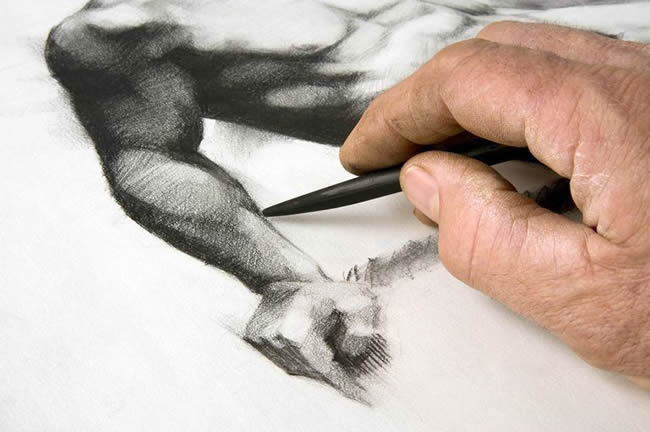
"There are a lot of willow trees along the levee where I used to live and I have always wanted to try making my own charcoal. I know that it has to be cooked for some amount of time, but I don't even cook supper. Do you have anything on the subject?" -- Cindy A.
Making charcoal is not something I've ever attempted, but it would certainly be fun to give it a try. Given how much quality charcoal can cost (the kind of charcoal that goes on smoothly until the last tiny bit, rather than smooth one moment and scratchy the next), it may be worth it. The result can surely not be worse than some of the cheap charcoal one can buy.
Daniel V. Thompson in his Materials and Techniques of Medieval Painting has this to say about vine charcoal black:
"It was important that the vine sprigs be throughly burnt and reduced to carbon... but they must not be burnt in the air or they might be reduced to ashes instead of to carbon. So the vine sprigs used to be packed tightly in little bundles in casseroles, covered and sealed, and baked in a slow oven."
Pip Seymour in his Artist's Handbook says:
"Wood that has been slowly charred in a closed environment produces charcoal. During this process, the supply of air is virtually excluded, but just enough is permitted to allow the wood to continue burning slowly."
Mark Gottsegen in The Painter's Handbook says:
"Vine charcoal... is made by slowly baking willow dowels (or other types of wood -- formerly grapevines) until they are reduced to almost pure carbon."
This led me to the thought that some sort of BBQ bread-baking, cast-iron dish (aka a dutch oven) with a lid might do the trick as these are designed for slow cooking on a fire. Or perhaps wrapping some sticks of wood up in heavy-duty aluminum foil and leaving them to "cook" on a camp fire or BBQ as you would a baked potato. Make sure everyone knows it's not food and not to open it.
Further Reading:
